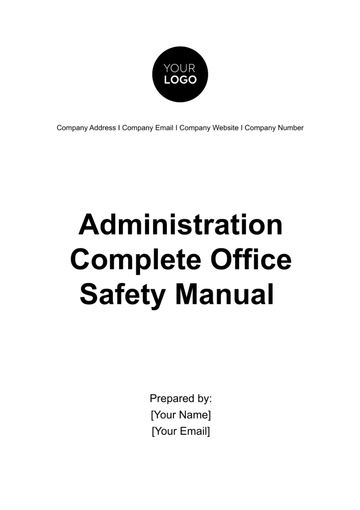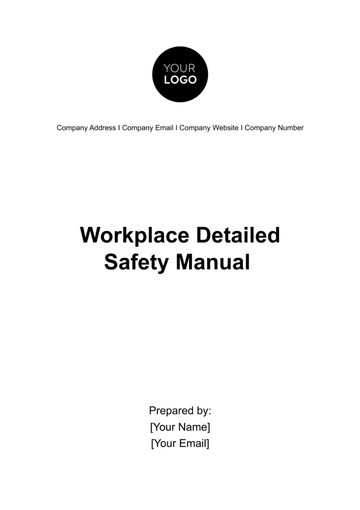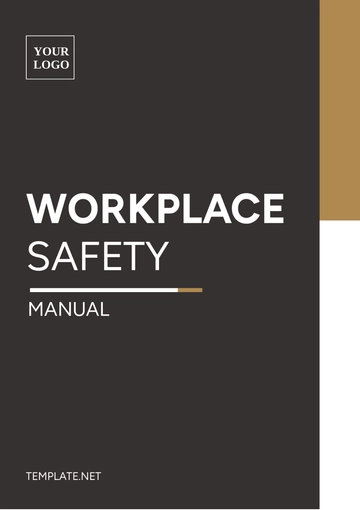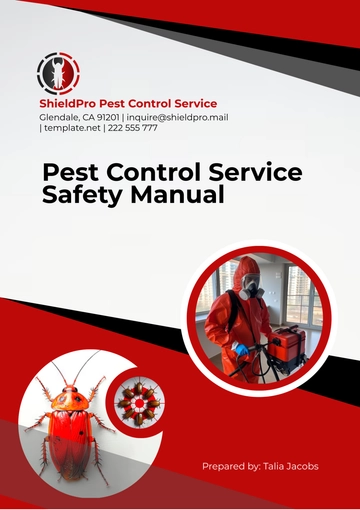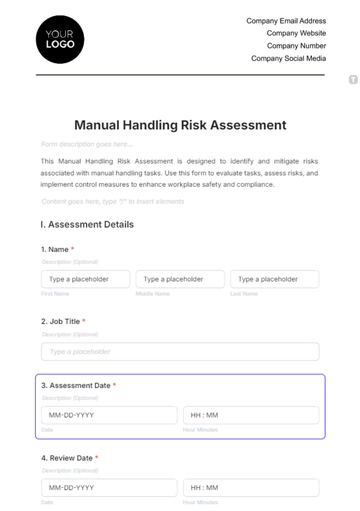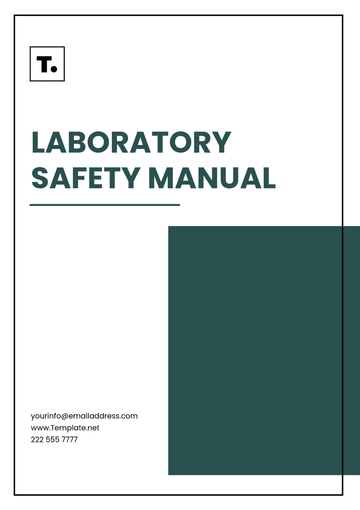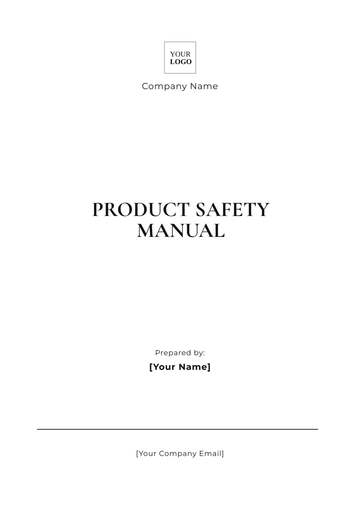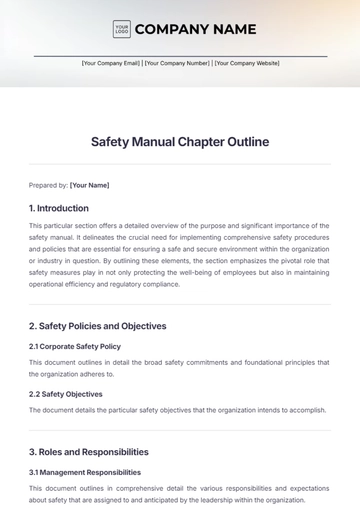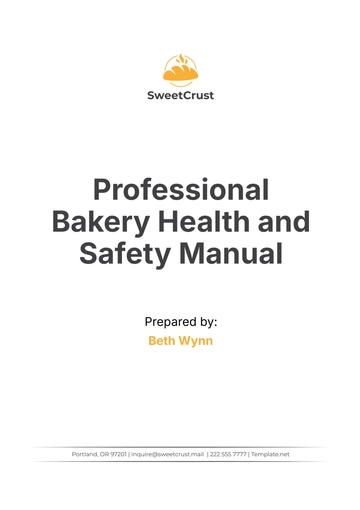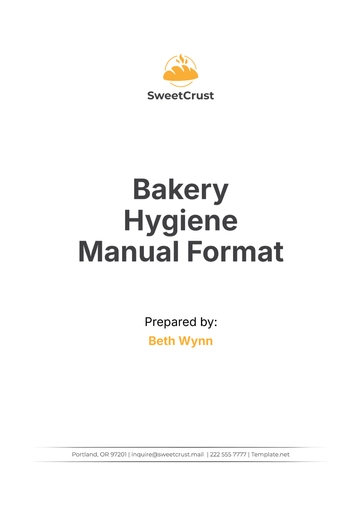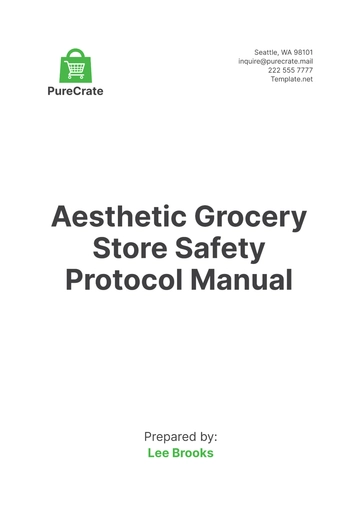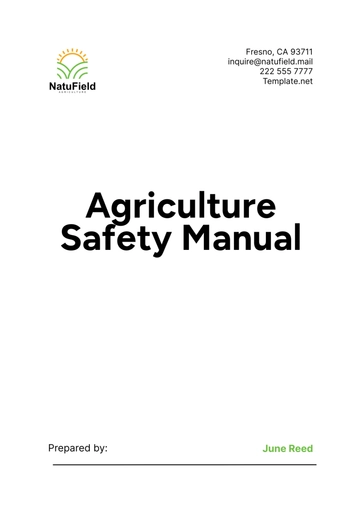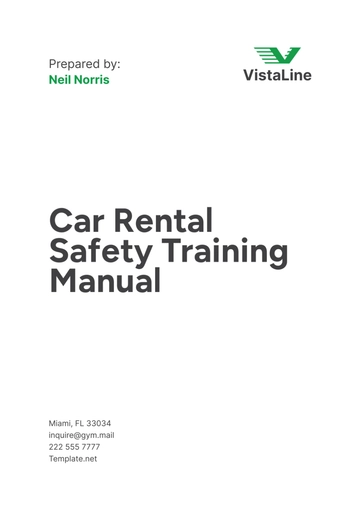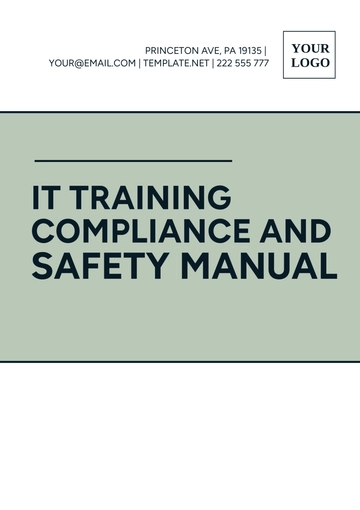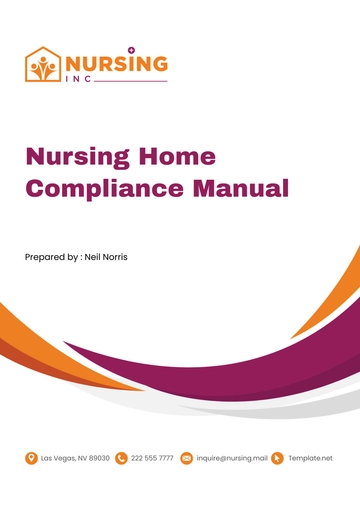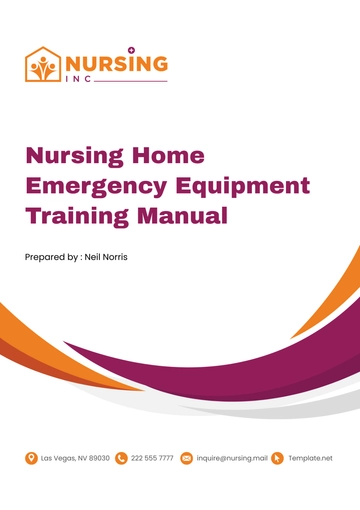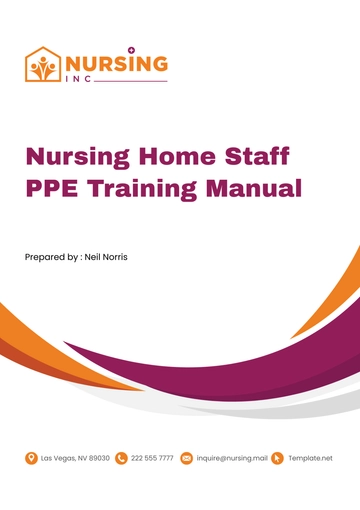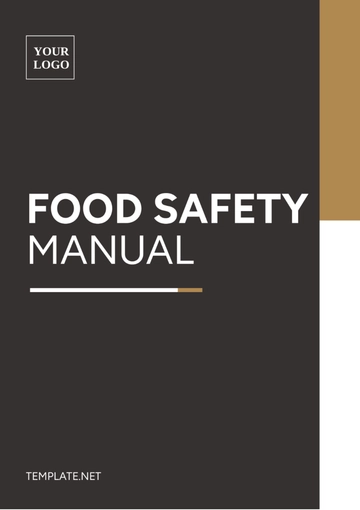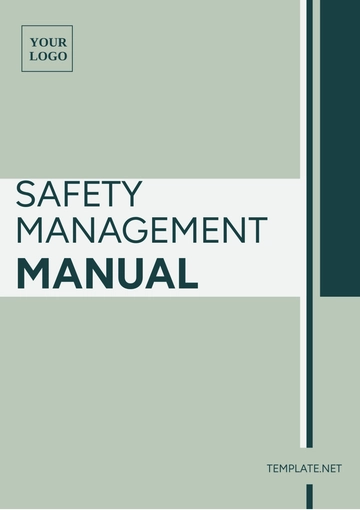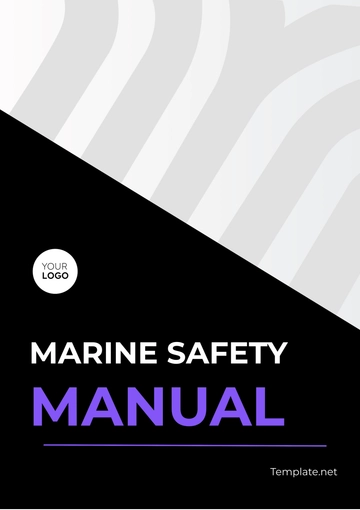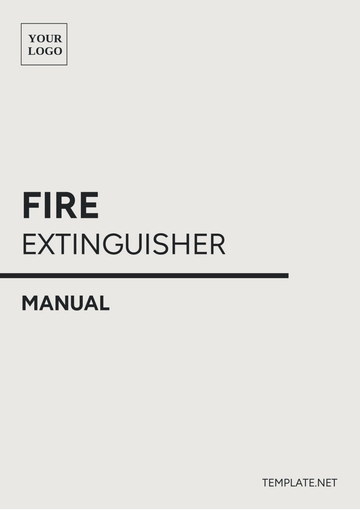Free Nursing Home Staff PPE Training Manual
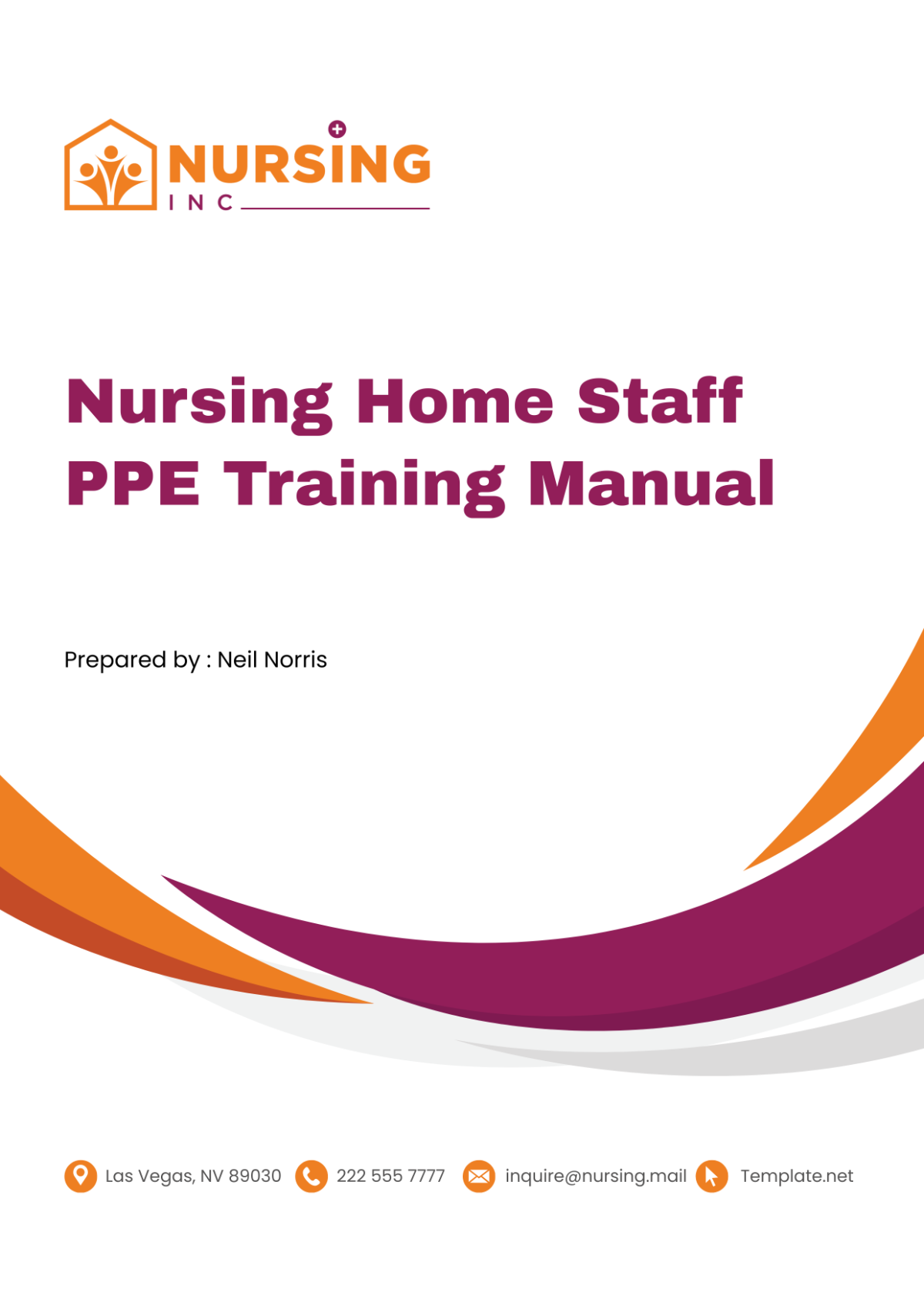
I. Introduction
Welcome to the Personal Protective Equipment (PPE) Training Manual of [Your Company Name]. This manual is designed to provide comprehensive information and guidance on the correct use of PPE in our nursing home setting. It aims to ensure the safety of both our staff and residents by minimizing the risk of infection and injury.
A. Purpose of the Manual
The purpose of this manual is threefold:
To Educate: The manual serves as an educational tool, providing detailed information about different types of PPE, their uses, and the correct procedures for donning and doffing.
To Guide: The manual provides step-by-step instructions and best practices for using PPE effectively and safely. It acts as a reference guide that can be consulted whenever needed.
To Promote Safety: The ultimate goal of this manual is to promote safety in our nursing home. By ensuring that all staff members are well-trained in the use of PPE, we can minimize the risk of infection and injury, thereby creating a safer environment for everyone.
B. Importance of PPE
The importance of PPE in a nursing home setting cannot be overstated. Here are some key points to consider:
Protection for Staff: PPE protects staff from exposure to infectious diseases and hazardous substances. It acts as a barrier, preventing harmful microorganisms or substances from coming into contact with the skin, eyes, respiratory system, and clothing.
Protection for Residents: PPE also protects residents by preventing the spread of infections. When staff use PPE correctly, they reduce the risk of transmitting infectious diseases to residents, particularly those who are most vulnerable due to weakened immune systems or underlying health conditions.
Legal and Regulatory Compliance: The use of PPE in healthcare settings is not just a matter of best practice—it’s also a legal requirement. Regulatory bodies such as the Occupational Safety and Health Administration (OSHA) and the Centers for Disease Control and Prevention (CDC) have specific guidelines and standards for PPE use in healthcare settings. Compliance with these regulations is essential to avoid penalties and ensure the highest standard of care.
C. Scope of the Manual
This manual covers a wide range of topics related to PPE use in our nursing home. It includes information on the following:
Types of PPE: The manual provides detailed information on the different types of PPE used in our nursing home, including gloves, masks, respirators, gowns, and coveralls.
Use of PPE: The manual explains when and how to use each type of PPE, with step-by-step instructions for donning and doffing.
Maintenance and Disposal of PPE: The manual provides guidance on how to maintain reusable PPE and how to dispose of used PPE safely and correctly.
Limitations of PPE: The manual discusses the limitations of PPE and emphasizes that PPE is just one part of a comprehensive infection control strategy.
D. Training and Compliance
Training is a crucial part of ensuring the effective use of PPE. This manual is designed to be used in conjunction with regular PPE training sessions.
PPE Training: Regular PPE training sessions should be attended. These sessions provide hands-on practice with donning and doffing PPE, as well as opportunities to ask questions and clarify any points of confusion.
Compliance: Compliance with the guidelines and procedures outlined in this manual is mandatory. Non-compliance can lead to disciplinary action, up to and including termination of employment.
Continuous Learning: The field of infection control is constantly evolving, with new types of PPE and new guidelines for their use. Therefore, it’s important to stay informed about the latest developments and to continuously update skills and knowledge.
Feedback and Improvement: Feedback on the content of this manual and the associated training sessions is always welcome. This feedback is used to continuously improve the training program and ensure it meets the needs of staff members.
II. Types of PPE
In a nursing home setting, various types of Personal Protective Equipment (PPE) are used to protect staff and residents from potential health hazards. Each type of PPE serves a specific purpose and offers a certain level of protection. The following table provides an overview of the different types of PPE commonly used in our nursing home:
Type of PPE | Definition |
|---|---|
1. Gloves | Gloves protect the hands from exposure to harmful substances and infectious materials. |
2. Masks | Masks cover the nose and mouth to protect the wearer from inhaling harmful substances or infectious particles. |
3. Respirators | Respirators provide a higher level of protection than masks, filtering out smaller particles and providing a tight seal around the nose and mouth. |
4. Gowns | Gowns cover the body to protect the wearer from exposure to harmful substances and infectious materials. |
5. Coveralls | Coveralls provide full-body protection, covering the arms, legs, and torso. |
6. Face Shields | Face shields protect the face, including the eyes, nose, and mouth, from splashes and sprays of harmful substances. |
7. Goggles | Goggles protect the eyes from exposure to harmful substances and infectious materials. |
8. Shoe Covers | Shoe covers protect the shoes and lower part of the legs from exposure to harmful substances and infectious materials. |
9. Caps | Caps cover the hair to prevent it from contaminating the environment or being contaminated by harmful substances or infectious materials. |
10. Aprons | Aprons provide an additional layer of protection for the front of the body, protecting the wearer’s clothes from exposure to harmful substances and infectious materials. |
A. Gloves
When to Use Gloves: Gloves should be worn whenever there is a risk of exposure to harmful substances or infectious materials. This includes tasks such as handling waste, cleaning contaminated surfaces, and providing personal care to residents.
How to Use Gloves: Gloves should be put on just before the task that requires them. After use, they should be removed without touching the outside and disposed of properly. Hands should be washed immediately after removing gloves.
Types of Gloves: Different types of gloves are used for different tasks. For example, examination gloves are used for patient care, while utility gloves are used for cleaning tasks.
B. Masks
When to Use Masks: Masks should be worn whenever there is a risk of exposure to airborne hazards. This includes tasks such as providing care to residents with respiratory infections, performing aerosol-generating procedures, and cleaning contaminated areas.
How to Use Masks: Masks should be put on before entering the area where the hazard is present. They should fit snugly against the face, covering the nose and mouth. Masks should be removed and disposed of immediately after leaving the area.
Types of Masks: Different types of masks offer different levels of protection. For example, surgical masks protect against large droplets, while N95 respirators filter out smaller particles.
C. Respirators
When to Use Respirators: Respirators should be worn whenever there is a risk of exposure to airborne hazards that cannot be adequately controlled by other means. This includes tasks such as performing aerosol-generating procedures on residents with infectious diseases.
How to Use Respirators: Respirators should be put on before entering the area where the hazard is present. They should fit snugly against the face, creating a seal around the nose and mouth. Respirators should be removed and disposed of immediately after leaving the area.
Types of Respirators: Different types of respirators offer different levels of protection. For example, N95 respirators filter out at least 95% of airborne particles, while P100 respirators filter out at least 99.97% of airborne particles.
D. Gowns
When to Use Gowns: Gowns should be worn whenever there is a risk of splashes or sprays of harmful substances or infectious materials. This includes tasks such as providing personal care to residents with infectious diseases, cleaning contaminated areas, and handling waste.
How to Use Gowns: Gowns should be put on before starting the task that requires them. After use, they should be removed without touching the outside and disposed of properly.
Types of Gowns: Different types of gowns are used for different tasks. For example, isolation gowns are used for patient care, while coveralls are used for cleaning tasks.
E. Coveralls
When to Use Coveralls: Coveralls should be worn whenever there is a risk of exposure to harmful substances or infectious materials that could contaminate the body or clothing. This includes tasks such as cleaning contaminated areas and handling waste.
How to Use Coveralls: Coveralls should be put on before starting the task that requires them. After use, they should be removed without touching the outside and disposed of properly.
Types of Coveralls: Different types of coveralls offer different levels of protection. For example, disposable coveralls are used for tasks with a high risk of contamination, while reusable coveralls are used for tasks with a lower risk of contamination.
F. Face Shields
When to Use Face Shields: Face shields should be worn whenever there is a risk of splashes or sprays of harmful substances or infectious materials. This includes tasks such as providing care to residents with infectious diseases and cleaning contaminated areas.
How to Use Face Shields: Face shields should be put on before starting the task that requires them. After use, they should be removed without touching the front and cleaned or disposed of properly.
Types of Face Shields: Different types of face shields offer different levels of protection. For example, full-face shields provide more comprehensive protection than half-face shields.
G. Goggles
When to Use Goggles: Goggles should be worn whenever there is a risk of splashes or sprays of harmful substances or infectious materials. This includes tasks such as providing care to residents with infectious diseases and cleaning contaminated areas.
How to Use Goggles: Goggles should be put on before starting the task that requires them. After use, they should be removed without touching the front and cleaned or disposed of properly.
Types of Goggles: Different types of goggles offer different levels of protection. For example, indirect vent goggles protect against splashes and sprays, while direct vent goggles protect against dust and particles.
H. Shoe Covers
When to Use Shoe Covers: Shoe covers should be worn whenever there is a risk of contamination of the shoes or lower legs. This includes tasks such as cleaning contaminated areas and handling waste.
How to Use Shoe Covers: Shoe covers should be put on before entering the area where the hazard is present. After use, they should be removed without touching the outside and disposed of properly.
Types of Shoe Covers: Different types of shoe covers are used for different tasks. For example, disposable shoe covers are used for tasks with a high risk of contamination, while reusable shoe covers are used for tasks with a lower risk of contamination.
I. Caps
When to Use Caps: Caps should be worn whenever there is a risk of hair contamination. This includes tasks such as providing care to residents with infectious diseases and cleaning contaminated areas.
How to Use Caps: Caps should be put on before starting the task that requires them. After use, they should be removed without touching the outside and disposed of properly.
Types of Caps: Different types of caps are used for different tasks. For example, disposable caps are used for tasks with a high risk of contamination, while reusable caps are used for tasks with a lower risk of contamination.
J. Aprons
When to Use Aprons: Aprons should be worn whenever there is a risk of contamination of the front of the body or clothing. This includes tasks such as providing personal care to residents and cleaning contaminated areas.
How to Use Aprons: Aprons should be put on before starting the task that requires them. After use, they should be removed without touching the front and disposed of properly.
Types of Aprons: Different types of aprons are used for different tasks. For example, disposable aprons are used for tasks with a high risk of contamination, while reusable aprons are used for tasks with a lower risk of contamination.
III. Proper Use of PPE
Proper use of PPE is crucial for ensuring its effectiveness. This includes knowing how to put on and take off PPE, and understanding the limitations of PPE.
A. Donning PPE
Donning PPE correctly is crucial for ensuring its effectiveness. Here are some steps to follow:
Perform Hand Hygiene: Before touching any piece of PPE, perform hand hygiene. This involves washing hands with soap and water for at least 20 seconds or using a hand sanitizer with at least 60% alcohol. Hand hygiene is the first step in donning PPE because clean hands reduce the risk of contaminating the PPE during the donning process.
Put on Gown: If a gown is needed, put it on first. Ensure it covers the torso from neck to knees and the arms to the end of the wrists, and that it wraps around the back. Tie it at the neck and waist. The gown provides a barrier between the wearer and potential sources of infection, protecting the wearer’s clothing and skin from contamination.
Put on Mask or Respirator: Place the mask or respirator over the nose, mouth, and chin. If using a mask, secure the ties or elastic bands at the middle of the head and neck. If using a respirator, perform a seal check according to the manufacturer’s instructions. The mask or respirator protects the wearer from inhaling infectious particles and droplets.
Put on Goggles or Face Shield: Place goggles or face shield over the face and eyes and adjust to fit. The goggles or face shield protect the wearer’s eyes from exposure to infectious droplets and splashes.
Put on Gloves: Lastly, put on gloves. Gloves should cover the cuffs of the gown. The gloves provide a barrier between the wearer’s hands and potential sources of infection, protecting the wearer from direct contact with infectious materials and contaminated surfaces.
B. Doffing PPE
Doffing PPE correctly is crucial for preventing self-contamination. Here are some steps to follow:
Remove Gloves: Using a glove-to-glove/skin-to-skin technique, grasp the outside of one glove with the other gloved hand, and peel it off. Hold the removed glove in the gloved hand, then slide the fingers of the ungloved hand under the remaining glove at the wrist, and peel it off over the first glove. Gloves are removed first because they are likely to be heavily contaminated.
Remove Goggles or Face Shield: Handle by the headband or earpieces and lift away from the face. The goggles or face shield are removed next to avoid contaminating the hands while removing other PPE.
Remove Gown: Unfasten the ties, peel the gown away from the neck and shoulders, touching the inside of the gown only. Turn the gown inside out, fold or roll into a bundle, and discard. The gown is removed next because removing it last could result in contamination of the hands or other PPE.
Remove Mask or Respirator: Grasp the bottom, then the top ties or elastics, and remove without touching the front. Discard. The mask or respirator is removed last because it is less likely to be contaminated than the gloves or gown.
Perform Hand Hygiene: After all PPE has been removed, perform hand hygiene as described above. Hand hygiene is performed last to remove any potential contamination that occurred during the doffing process.
C. Limitations of PPE
While PPE provides a level of protection, it is not foolproof. Here are some important points to remember:
Not a Substitute for Other Controls: PPE is not a substitute for other controls, such as engineering controls (e.g., ventilation) and administrative controls (e.g., work practices). It should be used in conjunction with these controls to provide the maximum level of protection. Relying solely on PPE for protection can give a false sense of security and may lead to neglect of other important safety measures.
Proper Use is Crucial: PPE must be used correctly to be effective. This includes proper donning and doffing, regular replacement, and proper disposal of PPE. Incorrect use of PPE can result in exposure to hazards, so it’s important to follow all guidelines and procedures for PPE use.
Training is Essential: Regular training is essential to ensure that all staff members know how to use PPE correctly. Training should include demonstrations and practice in donning and doffing PPE, as well as information on the limitations of PPE. Without proper training, staff may not use PPE correctly, reducing its effectiveness.
IV. Maintenance and Disposal of PPE
Maintaining and disposing of PPE properly is crucial for ensuring its effectiveness and preventing contamination. Here are some guidelines to follow:
A. Cleaning and Disinfection
Reusable PPE should be cleaned and disinfected after each use, following the manufacturer’s instructions.
Identify Reusable PPE: Not all PPE is reusable. It’s important to identify which items can be cleaned and reused, such as goggles, face shields, and some types of gowns and coveralls. This helps in managing resources effectively and ensures that disposable PPE is not mistakenly treated as reusable.
Follow Manufacturer’s Instructions: Each item of PPE will have specific instructions for cleaning and disinfection provided by the manufacturer. Always follow these instructions to ensure the PPE is effectively cleaned without damaging the material. This helps in maintaining the integrity and effectiveness of the PPE.
Use Appropriate Cleaning and Disinfection Products: Use cleaning and disinfection products that are suitable for the type of PPE and the type of contamination. For example, use a detergent or soap and water for cleaning, and a hospital-grade disinfectant for disinfection. This ensures that all harmful substances or infectious materials are effectively removed from the PPE.
Ensure Complete Drying: After cleaning and disinfection, ensure the PPE is completely dry before reuse. Moisture can degrade some materials and can also promote the growth of microorganisms. Therefore, proper drying is essential to maintain the effectiveness of the PPE.
Perform Hand Hygiene: After handling contaminated PPE, always perform hand hygiene to prevent self-contamination. This can be done by washing hands with soap and water for at least 20 seconds or using a hand sanitizer with at least 60% alcohol.
B. Inspection and Repair
After cleaning and disinfection, reusable PPE should be inspected for any damage. Minor damage may be repaired, but heavily damaged PPE should be replaced.
Inspect for Damage: After each cleaning and disinfection cycle, check the PPE for any signs of damage, such as tears, holes, cracks, or signs of wear. Pay particular attention to areas that are often under stress, such as seams and straps. Regular inspection helps in identifying damaged PPE that may not provide adequate protection.
Repair Minor Damage: If minor damage is found, it may be possible to repair the PPE. For example, small tears in gowns or coveralls can be sewn up, and loose straps can be tightened. However, ensure that any repairs do not compromise the protective function of the PPE.
Replace Heavily Damaged PPE: If heavy damage is found, or if the PPE no longer fits correctly or provides adequate protection, it should be replaced. Never use PPE that is not in good condition as it may not provide adequate protection.
Report Damaged PPE: If damaged PPE is found, report it to the appropriate person in your organization, such as your supervisor or the health and safety officer. This ensures that the issue is addressed promptly and helps in maintaining a safe working environment.
C. Storage
After cleaning, disinfection, and inspection, reusable PPE should be stored in a clean, dry place.
Choose Appropriate Storage Location: The storage location should be clean, dry, and out of direct sunlight. It should also be easily accessible so that the PPE can be quickly retrieved when needed. Proper storage helps in maintaining the condition of the PPE and ensures its readiness for use.
Store PPE Correctly: Store PPE in a way that prevents damage and contamination. For example, do not store heavy items on top of PPE, do not fold PPE in a way that could damage it, and do not store PPE in a dirty or damp location. Proper storage helps in prolonging the life of the PPE and ensures its effectiveness.
Check PPE Before Use: Before using PPE, check it for any signs of damage or contamination that may have occurred during storage. This ensures that only PPE in good condition is used, thereby providing the maximum level of protection.
D. Disposal of PPE
Used PPE can be contaminated with harmful substances or infectious materials and needs to be disposed of properly.
Identify Disposable PPE: Not all PPE is disposable. Identify which items are designed to be discarded after use, such as gloves, masks, respirators, and some types of gowns and coveralls. This helps in managing waste effectively and ensures that reusable PPE is not mistakenly discarded.
Follow Local Regulations and Guidelines: The disposal of PPE, particularly if it is contaminated with infectious materials, may be regulated by local waste disposal regulations. Always follow these regulations, as well as any guidelines provided by your organization. This ensures compliance with legal requirements and helps in preventing environmental contamination.
Use Designated Waste Containers: Dispose of used PPE in designated waste containers. These containers should be lined with a plastic bag, and should be closed when not in use to prevent the spread of contamination. Proper disposal helps in managing waste effectively and prevents the spread of harmful substances or infectious materials.
Handle Contaminated PPE Carefully: When disposing of contaminated PPE, avoid touching the outside of the PPE as much as possible. Consider wearing a pair of disposable gloves while handling contaminated PPE. This helps in preventing self-contamination.
Perform Hand Hygiene: After handling and disposing of contaminated PPE, always perform hand hygiene to prevent self-contamination. This can be done by washing hands with soap and water for at least 20 seconds or using a hand sanitizer with at least 60% alcohol.
Regularly Empty Waste Containers: Waste containers for PPE should be emptied regularly to prevent overfilling. The waste should be disposed of in accordance with local regulations for medical or hazardous waste. Regular disposal helps in managing waste effectively and prevents the accumulation of waste in the work area.
V. Conclusion
The use of Personal Protective Equipment (PPE) is a critical aspect of maintaining a safe and healthy environment in our nursing home. By adhering to the guidelines outlined in this manual, you are playing a vital role in protecting yourself, your colleagues, and our residents from potential health hazards. Your commitment to learning and correctly implementing these procedures is greatly appreciated.
This training manual is designed to be a comprehensive guide, but it is important to remember that the field of health and safety is constantly evolving. New types of PPE may become available, and guidelines for their use may change. Therefore, we encourage you to stay informed about the latest developments and to continuously update your skills and knowledge. Regular training sessions will be provided to support you in this.
Finally, we would like to express our gratitude for your hard work and dedication. Your efforts make a significant difference in the lives of our residents. We look forward to working with you as we strive to provide the best possible care for our residents. Thank you for being a part of our team at [Your Company Name].
- 100% Customizable, free editor
- Access 1 Million+ Templates, photo’s & graphics
- Download or share as a template
- Click and replace photos, graphics, text, backgrounds
- Resize, crop, AI write & more
- Access advanced editor
Equip staff with proper protective equipment usage using the Nursing Home Staff PPE Training Manual Template by Template.net! Ensure seamless guide creation with this editable guide for streamlining PPE training. Utilize the customizable fields and the AI Editor Tool to customize the manual to reflect facility-specific policies and procedures accurately!

